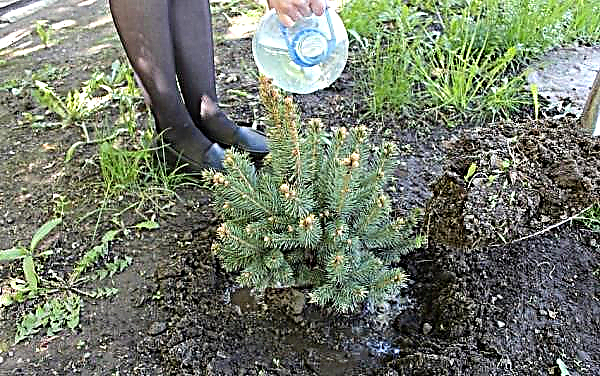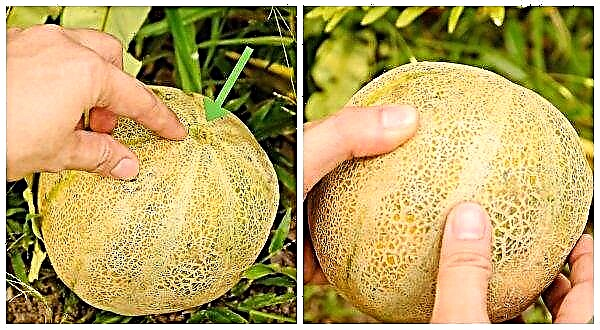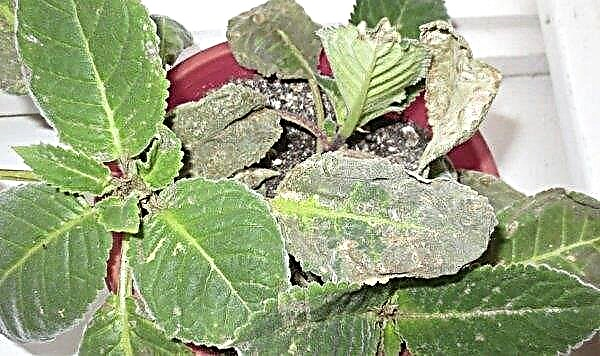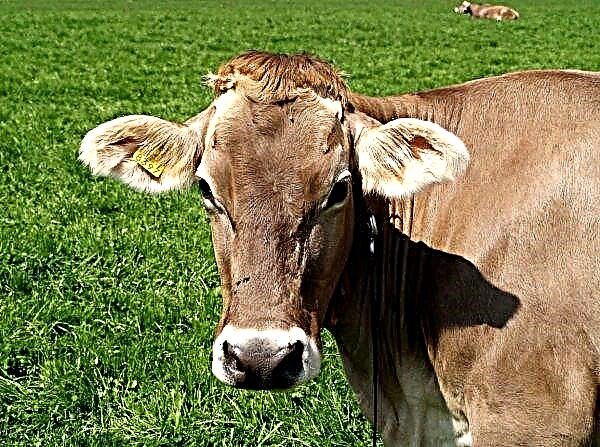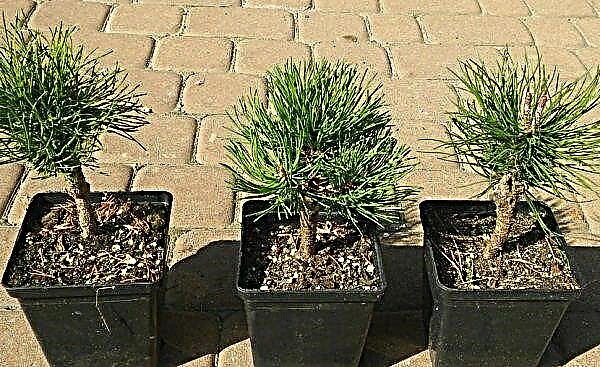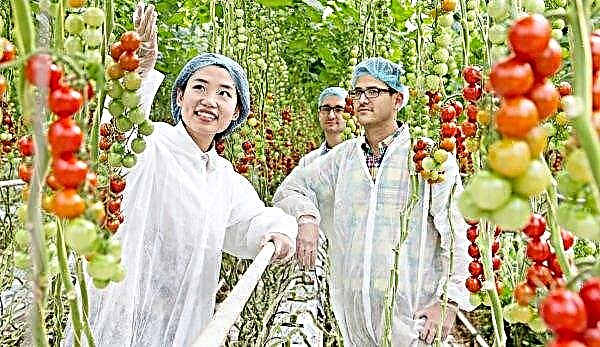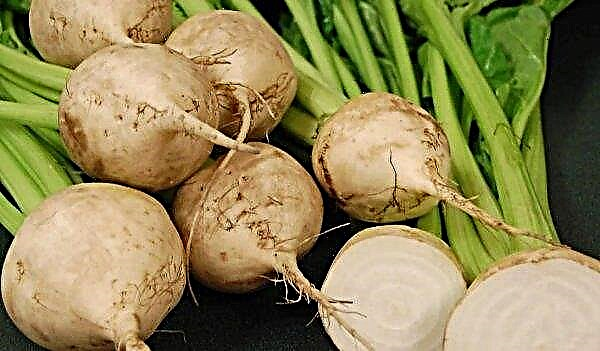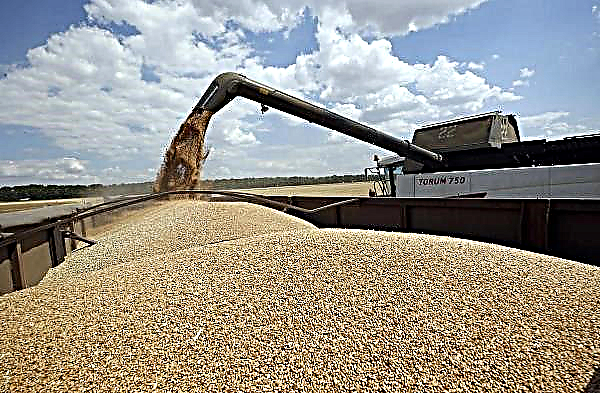Like other plants, blueberries are affected by diseases and pests. If in time you do not pay attention to the appearance of the symptoms of the disease, then the plant will slow down significantly in development and there may not be a crop at all. Properly selected means for the prevention and treatment of the disease will save the plant from death.
Types of diseases
Blueberries are a plant with tasty, sweet and aromatic fruits. The bush can reach a height of 2 m. The bush is erect, with a large number of branches that need to be thinned from time to time. Fruits resemble small pears that are slightly flattened. Most often, the berries are blue with a bluish tinge. If all the requirements of agricultural technology and care from 1 bush are met, you can collect about 1 kg of berries. The yield is significantly affected by the variety of the plant, the growing conditions.
The optimal soil for growth is acidic soil. The culture tolerates temperature drops well, although it is quite sensitive to spring return frosts. The plant is a wonderful honey plant. To obtain a high yield and improve taste characteristics, it is advisable to plant several varieties of this plant on the site. Harvesting is better by hand so as not to damage the fruits. Fruiting occurs on young shoots, therefore, branches are rejuvenated once every 3-4 years. It is advisable to perform such manipulations in early spring or late fall.
Did you know? Due to the high content of vitamin C in blueberries, it was used to treat scurvy. And the British Air Force pilots used it to maintain visual acuity at night.
To prevent the occurrence of diseases and other troubles, you need to know what factors can become preventive measures.
These include:
- removal of the remains of plants and weeds;
- thinning shrubs;
- treatment of the bush in spring and autumn with fungicides.
Damage to the plant often occurs during a decrease in plant immunity. To protect the blueberry plantings, you need to know the manifestations of the disease, as well as how to deal with them. Ailments are divided into fungal and viral, which can affect all parts of the plant, as well as the fruits. The most common manifestation of an unhealthy plant is the mummification of the fruit.
Stalk
Diseases that affect the stem eventually lead to the death of the entire plant. That is why it is necessary to monitor its condition and, if necessary, take the necessary measures. From the soil, useful substances through the roots “pass” along the stem to the most isolated areas. That is why a healthy shrub is the key to a high yield.
The most common diseases that affect this part of the plant:
- Phomopsis. The first symptom of a bush damage by this ailment is the drying of the branches. Most often found on tall blueberries. The disease manifests itself in the death of 4-30 cm of the area, which gradually begins to curl. Leaves turn brown, dry and fall over time. The defeat of the bark resembles a sunburn. Factors that contribute to the development of the disease: high humidity or hot dry weather in late spring - early summer. The defeat occurs through the upper shoots, then "moving" along the trunk, it goes down and affects the entire plant. The main methods of combating this ailment are shrub pruning and burning of damaged shoots. For prevention, you need to spray the shrub with a Bordeaux mixture in early spring, and then treat it with a fungicide.

- Physalosporosis. Most often, the manifestation of this disease occurs in late summer or early fall. Symptoms - the formation of reddish swollen spots near lentils. A year after the first signs, this spot completely encircles the shoot and provokes its death. To prevent this, you need to cut the branches immediately after the detection of the disease.

Leaf
Leaf plates are actively involved in photosynthesis, which is very important for normal plant growth. Violation of the integrity of the leaf mass leads to a slowdown in full development. Damage to the leaves by diseases will lead to premature leaf fall and further death of the shrub. To prevent this, it is necessary to carry out preventive measures. If you find the first signs of an ailment, then it is worth removing the diseased fragments.
Did you know? Earlier in America, blueberries were called "star berries", as its flowers resemble a scattering of stars.
- Anthracnose considered the most common disease. Leaves are affected by spotting, resulting in drying out and falling of leaves. On the berries you can see orange spots from spores. Gradually, this leads to decay. As prophylactic agents, treatment with Bordeaux mixture is used (in spring), and for treatment it is more advisable to take the “Topsin” fungicide.
- White leaf spot. Leaf platinum begins to cover spots. Initially, they begin to turn white, and after a while they can change their color to rusty brown. Affected leaves wither and fall. For prevention, you need to clean the plant from diseased leaves and burn them.

Fungal nature
All representatives of the flora, which belong to angiosperms, are often affected by microscopic fungi. The leading position among fungal ailments is taken by shoot cancer. If you do not treat, the young plant will die, and the adult will lose most of the branches and cease to bear fruit. The main symptoms of cancer:
- the appearance of red or red-brown spots on the trunk. Gradually, they grow and become oval;
- the bark begins to exfoliate and ulcers appear;
- leaves turn brown with raspberry fringing.

No less dangerous is gray rot. It can affect leaves, shoots, fruits. It appears in the form of:
- leaf color changes;
- the process of the development of the disease originates from the top;
- red-brown foci become gray over time.
Another “aggressive” disease that affects blueberry bushes is powdery mildew. It is necessary to start treating blueberry as early as possible, as there is a chance of losing the entire crop. Manifestation - the formation of a white coating on the leaves. After some time, the drying of the sheet plates occurs and the color changes to gray.
If you look closely, then on the sheets you can see the black spores of the fungus. The most optimal conditions for the development of the disease are dry weather and sharp temperature drops with heavy rainfall. The danger lies in the fact that there is a decrease in frost resistance of crops and productivity. Chemical treatment is considered the most optimal solution to this problem. Use such substances must be strictly according to the instructions. Otherwise, you can do even more damage to the plant.
Chemical treatment is considered the most optimal solution to this problem. Use such substances must be strictly according to the instructions. Otherwise, you can do even more damage to the plant.
Viral nature
It is impossible to cure a bush in the tissue of which the virus has got. Even if you find damage in the early stages and remove the shoots, the disease will manifest itself anyway, sooner or later. Therefore, for the safety of other plants, diseased bushes need to be dug up and burned. For prevention, it is necessary to protect the bush from such pests.The most common diseases:
- Filamentity of branches. A characteristic manifestation of the disease is the formation of thin stripes on leaf plates. The leaves begin to curl, turn red, which leads to a slowdown in the development of the bush and even its death.
- Necrotic spotting. The first stage - leaf chlorosis begins, which manifests itself in the form of bright spots. After some time, the leaves dry, and then large holes appear on them. Photosynthesis becomes impossible, which leads to the death of shoots.
- Mosaic of leaves. Yellow stripes appear on the sheet, which may look like a mosaic pattern.
 The carriers of viruses can be ticks and nematodes, which belong to roundworms.
The carriers of viruses can be ticks and nematodes, which belong to roundworms.
It is necessary to carry out therapeutic measures very carefully, since an improperly selected remedy or dosage can adversely affect the general condition of the bush.
Pests and the fight against them
In addition to viral and fungal infections, they can significantly reduce productivity and lead to planting death - pests. The most common are:
- a caterpillar that settles on the leaves of a plant;
- aphid infects the upper parts of the plant and is a carrier of viral diseases;
- leaflet eats sheets and kidneys, enveloping the tops with a web;
- flower beetle damages the kidneys, as well as buds;
- a tick mite "injures" the kidneys, leading to their friability;
- Khrushchev eats color and eats leaves.

To eliminate such an unpleasant neighborhood, you need to carry out spring spraying with insecticides. Resist pests can be both chemical and organic drugs. Before the buds open, Azofos should be treated, during the period of active leaf growth - Skorom, during the fruit ovary - Terselom, and Skor again will come to the rescue when fruiting.
Important! Remember that using aspen sawdust (mulching) brings an extra dose of nitrogen to the ground. Exceeding the level of this element in the soil will have a negative impact on the culture.
Of the fungicides, the most effective are:
- "Mission";
- "Allergo";
- "Serenade";
- "Topaz".
As prophylactic agents, folk recipes are often used. Some are very effective, but not when pests and diseases appear. They can be completely eliminated only with the help of chemicals.
How to care for blueberries correctly
Care for garden blueberries consists in loosening the soil, weeding, top dressing, watering and pruning bushes. The main requirements are:
- loosening regularly and superficially. This will allow the soil to breathe and better penetrate moisture;
- watering, which is done twice a week. The norm for one bush is 5-7 liters. It is advisable to add water in the evening, as moisture will evaporate under the sun. During fruiting, the amount of water is increased to 10 l;
- mulching holes with sawdust, bark or needles;
- maintaining soil acidity. It is very important to maintain appropriate pH values, as this is a plant of “acidic soils”. Acidification is carried out in spring and summer. To do this, dilute in a bucket of water 2 tsp. citric (oxalic or malic) acid. 100 ml of 9% acetic acid may be used;
- feeding the plant. Organics are not recommended for this purpose. Only from the second year begin to make mineral fertilizers. Do this before swelling of the buds and during flowering. For the first time - a tablespoon, with each subsequent serving doubled. At 5-6, it becomes fixed. As a top dressing, experts advise using industrial mixtures - “Flovorit”, “Ogrod 2001”, etc.
 Violation of the fundamentals of agricultural technology can lead to wrinkling of leaves, stopping growth and development, as well as death of the plant.
Violation of the fundamentals of agricultural technology can lead to wrinkling of leaves, stopping growth and development, as well as death of the plant.Blueberry Processing
In addition to performing the basic stages of care, you need to know how to process tall blueberries. Such manipulations can be carried out using folk and chemical methods. It is important to choose the most effective, which will have a targeted effect and will not harm the plant.
Ridomil Gold
It belongs to the substances of systemic, contact action, which is aimed at preventing diseases. Processing must be carried out 7 days after the last spraying with "Ridomil Gold", i.e. withstand a certain time interval. Spraying protects the vegetative and generative sections of the bush. The duration of protection is 20 days. The maximum number of treatments per season is 3-4 times.
The maximum number of treatments per season is 3-4 times.
Fitosporin
This is a new generation substance that is used to combat fungal and bacterial infections. The range of his actions is very wide. The drug begins to act immediately after processing the shrub. They release it in the form of: powder, liquid or paste. Distribution of the drug occurs through the vascular system of the plant to the most remote areas. Its peculiarity lies in the fact that it can be used at any stage of the plant’s vegetation. Depending on weather conditions, protective properties last 7-14 days. Apply "Fitosporin" according to the instructions that come with the drug.
Fungicides
This class of drugs is used depending on the growing season. "Serenade" refers to organic substances, and often does not fully "cope with the task."Among the most effective are:
- "Antracol";
- "Topaz";
- "Mission";
- "Serenade";
- copper oxychloride;
- Bordeaux mixture.

Blueberry Prevention
To get a high yield and enjoy a healthy plant, you need to carry out preventive actions. To do this, you must:
- choose zoned, disease-resistant varieties of blueberries;
- acidify, fertilize and water the land before planting;
- provide enough sunlight;
- the distance between the bushes should be less than 2 m;
- trim the crown not only to remove damaged areas, but also for better air circulation;
- to process the Bordeaux mixture in early spring;
- burn fallen leaves;
- carry out fungicide treatment after a full harvest.
 When processing bushes, you need to remember about personal safety. Do not forget about the protective mask and replaceable clothing. Make sure that when spraying the plantings, the chemical product does not get into the respiratory tract, eyes and skin. In case of contact - immediately wash off with running water and soap.
When processing bushes, you need to remember about personal safety. Do not forget about the protective mask and replaceable clothing. Make sure that when spraying the plantings, the chemical product does not get into the respiratory tract, eyes and skin. In case of contact - immediately wash off with running water and soap.
Compliance with all the recommendations will not only save the plant in case of negative impacts, but also enjoy delicious berries at the end of the season. Remember that chemicals have components that are only effective when used properly. Violation of the norms and rules of use can adversely affect the development of plants.



